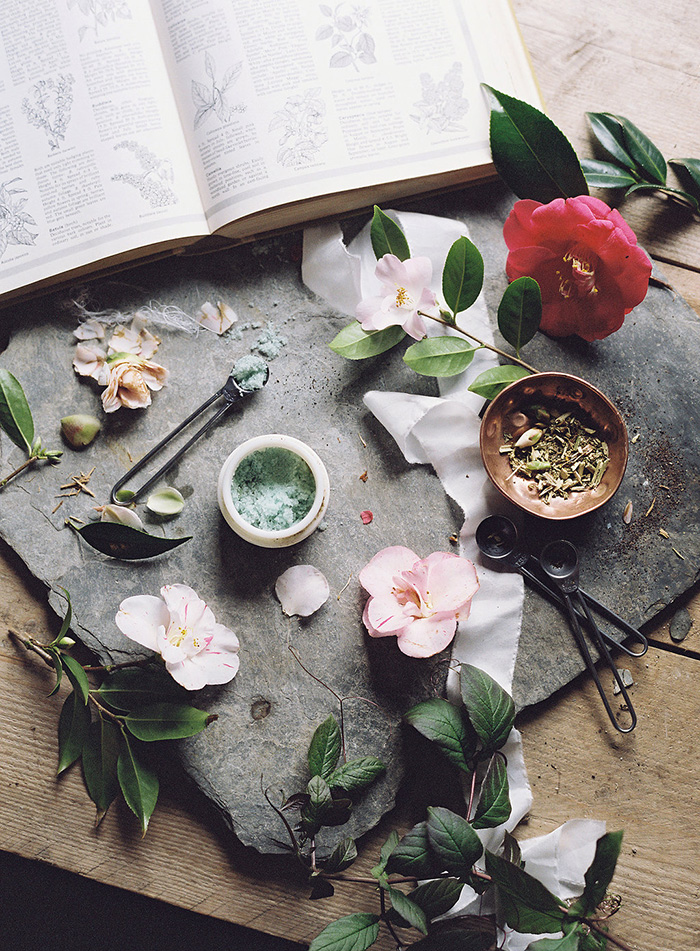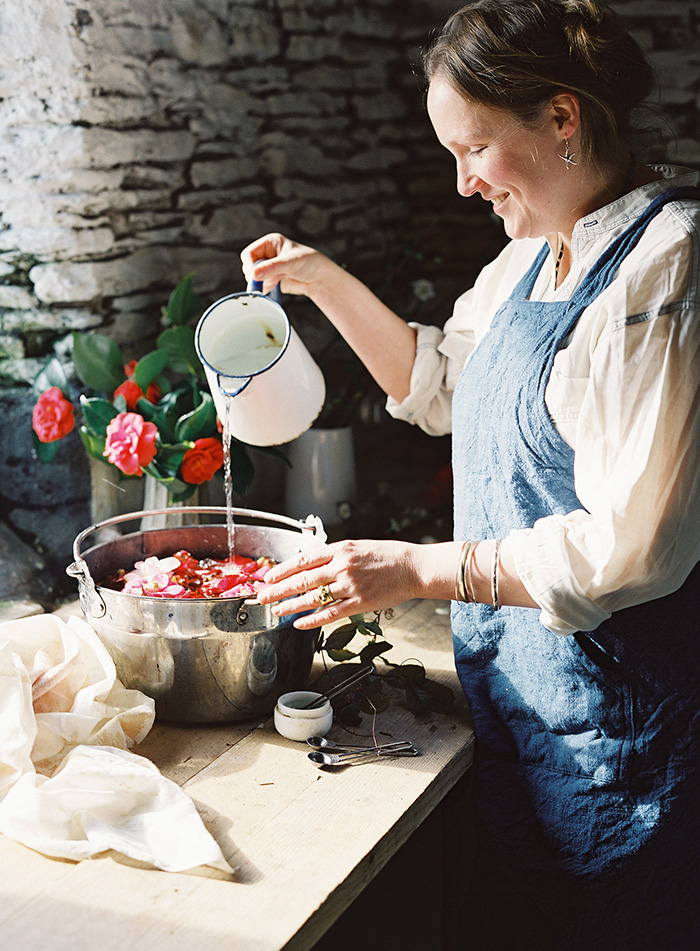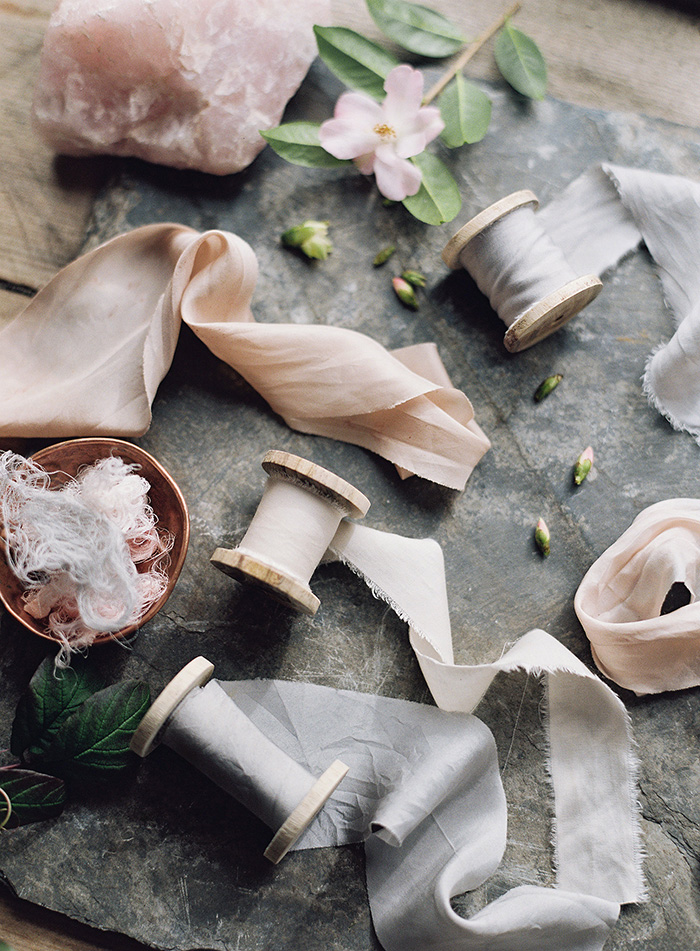The natural beauty of plant dyes
© Taylor & Porter
One of only a handful of artisans in the UK using natural, plant-based dyes, Sian Cornish of Lancaster & Cornish brings fabric alive with nature, in a genuinely eco-friendly venture
‘I love taking colour from the landscape and putting it onto fabric,’ says Sian, who works from a small shed studio at her home in Cornwall and sells her beautiful hand-coloured ribbons and luxurious fabrics online, predominantly to brides and florists.
Sian noticed a contrast between hand-dyed fabrics and commercially manufactured ones and started experimenting, making natural dyes using plants and flowers. She went back to basics, collecting plants such as gorse, camellias, rose petals and berries, and boiling up mixtures in her kitchen, developing soft, romantic hues of pink, grey, gold or cream.

© Taylor & Porter
The process itself is low impact. Everything is done by hand on a small scale and she works to her own secret recipes, producing ribbons with a contemporary edge. ‘I started out experimenting in the fruit and veg department of my kitchen, and using things like tea and coffee. I learnt through trial and error to develop a small palette of colours and every season I expand on that,’ she explains.
She compares hand-dyeing to cooking. ‘It’s all about the process of these chemical reactions and that development of subtle colour. And just as people like to know where their food is sourced from, there’s a story to where these colours come from,’ says Sian, who explains that plant markings show up on the fabric and that appeals to her clients – often florists, stationers, cake-makers and wedding stylists. ‘All these imperfections in the ribbon have their own natural beauty.’

© Taylor & Porter
After spending a day gathering plant material, she produces a dye bath on the hob in her home studio. The petals or leaves are made into a solution with water, then gently heated up. ‘It’s the same principle as making a cup of tea,’ she says. Once the colour has been extracted, she adds a metallic fixer or mordant and soaks the fabric in this bath. ‘Then I just let the magic happen – sometimes I’ll leave it in for hours, depending on the depth of colour I’m looking for.’ Once dried, she frays each ribbon by hand, irons and hand-spools them onto a sustainable wooden reel. It’s time-consuming and far from high-tech.
‘People are often surprised by natural dyes,’ she says. ‘To me, it’s like alchemy – out comes something beautiful and there’s such a sense of wonder and delight! Naturally dyed fabric is imbued with nature; it has subtleties and shading and it changes with the light, just as plants and flowers do.’ And therein lies the magic.

© Taylor & Porter
Sian’s simple ribbon-dyeing recipe
This is a contact-printing recipe that’s easy to do. Note that the colours achieved may not be permanent, and will fade over time. Many people are sensitive or allergic to different plants and some plants are poisonous, so Sian advises researching any you are unsure about. Gloves are recommended when handling plant matter, and always use dedicated equipment for dyeing, rather than your usual cooking pans.
- Gather some plant materials from your kitchen and garden. Use berries in season (raspberries, blackberries or redcurrants), herbs, flower heads and petals from roses, geraniums, cornflowers or anything you can find that is safe to use.
- Take some strips of pure silk, either ribbon or torn strips, and wet a little with a water spray. It is important that the fabric is pure silk rather than a synthetic fibre, to get the best results.

© Debbie Kelly

© Debbie Kelly

© Debbie Kelly

© Debbie Kelly

© Debbie Kelly

© Debbie Kelly
- Lay the silk out on a flat surface and arrange your plant materials and other foraged items onto it. Don’t worry too much about creating a pattern; much of the joy is in experimenting! Roll the silk up and bind with fine string or dental floss.
- Pop the bundles into a bowl of diluted vinegar solution (2 teaspoons of vinegar to 500ml water) and give them a little squeeze to make sure the fabric is thoroughly wetted.
- Using a simple steamer, bring the water to the boil, pop the bundles inside and leave for 5–10 minutes. Alternatively, you could create a mini solar oven: put the bundles in a glass jar, seal and leave for a while for the colours to develop.
- Carefully remove – they will be hot! – and cool a little before unveiling your results. Air dry.
WORDS: ANNA TURNS
Before you go...
...fancy automatic entry to all future competitions?
Simply register online today for FREE and you will get:
Automatic entry to all current and future competitions.
Access to Reclaim Inspiration - an online visual pinboard for saving all your home and style inspiration.
A regular newsletter of inspiration, ideas and advice.

Save all your articles in one place
Become a Reclaim Member to save all your home and style inspiration. Simply login or register online today for FREE and you will get:
Automatic entry to all current and future competitions.
Access to Reclaim Inspiration - an online visual pinboard for saving all your home and style inspiration.
A regular newsletter of inspiration, ideas and advice.








